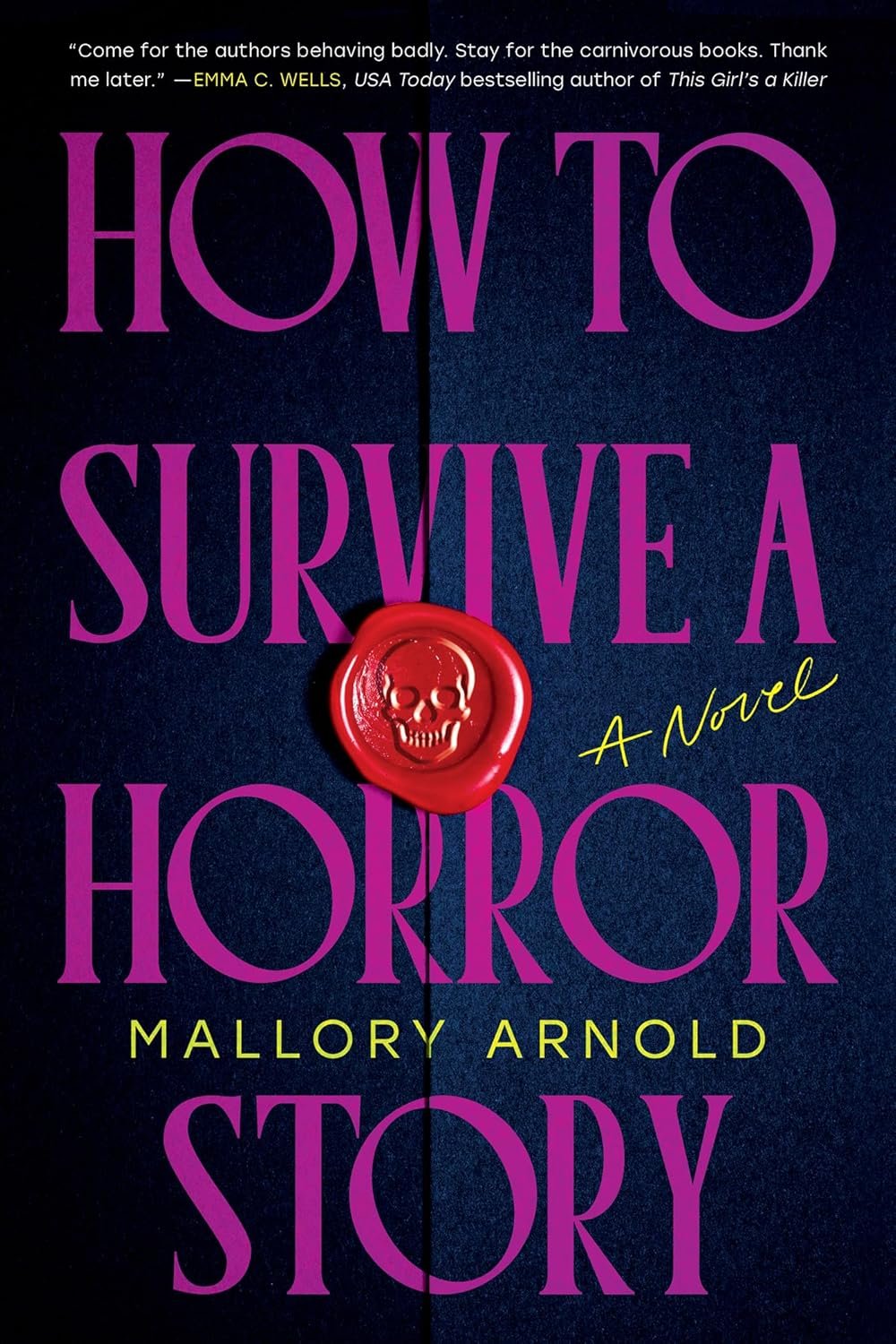
02 Aug Book Review of How to Survive a Horror Story
Surviving the Unexpected: My Experience with How to Survive a Horror Story
Isn’t it fascinating how a well-crafted horror story can pull you in with its eerie allure? When I first stumbled upon Mallory Arnold’s How to Survive a Horror Story, I was immediately intrigued—not just by the title but by its promise of a thrilling ride nestled within the confines of a classic Locked-Room mystery. With the backdrop of a legendary horror author’s manor offering a tantalizing mix of suspense and literary homage, I knew I had to dive in.
Set in the shadowy halls of Mortimer Queen’s estate, the novel introduces us to a motley crew of characters: Melanie, Crystal, Winnie, and Felix (who’s uninvited but can’t resist joining the fray), along with Scott, Petey, Buck, Chester, and Gia—the enigmatic estate representative. Each character is as lively as they are suspicious, giving Arnold a canvas rich with potential for conflict and intrigue. As they gather under the pretense of unveiling the author’s will, the air is thick with a blend of anticipation and dread. What secrets lie behind the manor’s doors?
The structure of the story, bouncing between the distinct perspectives of the characters, is reminiscent of a game of Clue—a setup I absolutely adore. This connection nods to traditional genre roots while steering us toward uncharted territory. Once the dinner bells ring and the rules of their “dangerous game” are revealed, my heart raced alongside the pulse of the narrative. Arnold does a commendable job of redefining expectations; while I anticipated a straightforward survival tale, the tempo shifts, blending horror elements with character exploration that caught me off guard.
However, as much as I appreciated the author’s ambition, I did feel the story sometimes struggled to pick a lane. Was it a gruesome, supernatural survival game, or a slow-burning character-driven tale? I found myself wishing for a more cohesive vision; it felt at times like the narrative was unsure of its own identity. Nevertheless, I recognize and admire the risks that Arnold took, and who knows? That very disharmony may resonate with readers seeking something a little different from the norm.
What really struck me about How to Survive a Horror Story was its unique incorporation of a book-within-a-book element. If you, like me, are a sucker for metatextual layers, this feature adds another dimension to the reading experience. Though the novel may not earn its spot in my all-time favorites, I’m genuinely excited to see what Arnold has in store next.
In conclusion, if you relish classic horror tropes but desire a twist that veers off the beaten path, I wholeheartedly recommend giving How to Survive a Horror Story a shot. There’s a rich blend of tension and character that could leave you questioning what you thought you knew about the genre. And who knows? Perhaps your reading experience will sway my opinion—I’m already eager to hear what others think! Many thanks to Poisoned Pen Press for the opportunity to dive into this cerebral romp through horror’s darker corners.
Discover more about How to Survive a Horror Story on GoodReads >>









